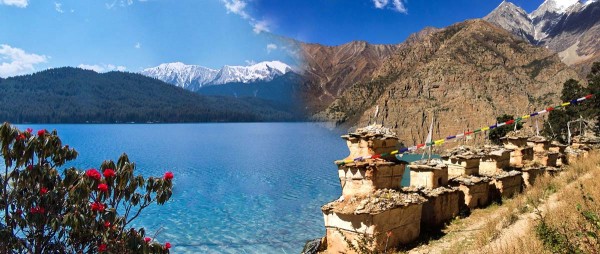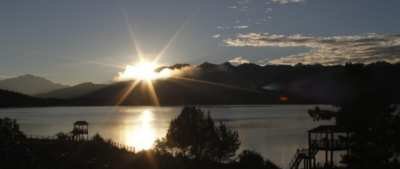Important Information
Region
Far West Nepal Treks
Duration
15 Days
Max Altitude 3750m
Best Season April - October
Activity Per Day
5-6 hrs
Grade
Level 2
Group Size
2 - 12 people
Transportation Flight - Jeep
The Rara Lake circuit trek through Sinja valley is an excellent trekking destination in Karnali province in far west Nepal, linking two different districts of Jumla and Mugu. The major attractions of this trek are Rara Lake, Sinja Valley, Jumla, Rara National Park, snowcapped mountain, landscape. If you are looking for an authentic trekking experience in pristine mountain scenery interlaced with legend, historic place, and folklore, look no further, this region is for you.
This trekking through the historic valley of Sinja to Rara Lake and returning to Jumla is a week-long trek. You don’t need trekking experience to attempt this trek. The grading nature of this trek is medium, less challenging. Different kinds of vegetation and animals have inhabited this region. Many travelers believe that this far west region will be a future adventure tourism hotspot. Himalayan Wander Walkers had designed this 15 days Jumla Rara trek with different itineraries from our Jumla to Rara Trek.
Trekking Route of Rara Circuit trek via Sinja Valley:
Trekking to Rara is one of the least visited destinations yet rewarding and appreciated by travelers. Most trekkers fly from Kathmandu to Nepalgunj and switching their flight to Jumla. The trek itinerary goes through the Sinja valley, ruled by Malla (Khasa) dynasty between the 12th and 14th centuries. The trek finally ends at Jumla. Now a day roadway is also possible to Jumla and Talcha via Surkhet but you need to change many vehicles on the way. That might be hectic and ruin your whole journey. So, the best option is to take a flight. The trails are at relatively low altitudes and a moderate level of fitness is fine to complete this trek.
If you are looking for a different itinerary than the itinerary here, please Customize Your Trip.
Include
Airport / Hotel / Airport pick up & transfer by car / Van.
All domestic flights from Kathmandu-Nepalgunj-Jumla and Jumla-Nepalgunj-Kathmandu and domestic airport taxes.
3 nights accommodation with breakfast at 3*** hotel in Kathmandu and standard hotel in Nepalgunj.
Kathmandu city tour and all entry fees as per the above itinerary.
Meals (breakfast, lunch, and dinner) with Tea & coffee and hot/cold filter water during the trek.
Tented camp and home-stay accommodation during the trek.
1 experienced helpful and friendly guide, 1 cook and necessary porters, their food & accommodation, salary, equipment, and insurance.
Trekking Equipment (Tent, mattress, dining tent, kitchen tent, toilet tent, kitchen utensils etc.)
All ground transportation by private car.
Rara National Park Permit.
All necessary permits.
First Aid Medical kit box.
Himalayan Wander Walkers' company Duffle bag for the trek use
Office Service charge.
All Government Tax.
Exclude
Any meals (Lunch and Dinner) in Kathmandu other than breakfast.
Your private Travel insurance.
International air fare to and from Nepal.
Nepal Tourist Visa fee.
Items and expenses of personal nature.
Any kind of alcoholic drinks, cold drinks, laundry, phone call, internet.
Personal Trekking Equipment like sleeping bags, jackets (can be hired in KTM) etc.
Emergency Evacuation (Helicopter Rescue).
Any costs which arise due to a change of the itinerary, because of landslides, political disturbance, and strikes, etc.
Any other costs whatsoever, that is not mentioned in the cost included.
Horse renting and additional porters during the trek due to natural calamities.
Tips for guide, porters, driver
Important Information
* The Price given here is per person based on a minimum of 2 people. The price will be cheaper with an increase in the number of people.
* Single Supplement is applied (if you are a single trekker)
CHECKLISTS FOR RARA LAKE CIRCUIT TREK THROUGH SINJHA VALLEY
- Valid passport (valid for six months from the date of your trip)
- MasterCard, Visa Credit, and Debit Cards are accepted in Nepal. However, some cash is highly recommended.
- Mobile (if your cell phone is from CINGULAR USA or ATNT (USA) operators, then your cell phone will work in Nepal.)
- Clothing (Layered clothes, windproof and waterproof jackets, fleece pullovers, thermal base layers, hiking pants, shorts, headwear, footwear, and other items according to your needs)
- Personal Items and Toiletries (First-Aid Kit, Iodine tablets or a UV purifier to treat water, Sun Protection)
- Travel and Health Insurance
- Trekking gear and equipment(if you have your own trekking gear and equipment, such as trekking poles, sleeping bag, and shoes, then you can bring them; else you can rent them in Thamel, Kathmandu). Read more for trekking gears and peak climbing gears.
Guiding, Food, and Lodging
Trekking in Nepal, all trekking supplies - Teahouse trekking means staying and eating in local lodges. We stay in single rooms where possible, but often you will have to share. The rooms are basic, normally just a bed with a pillow, blankets. A few have electric lights and all have a spacious dining room-lounge. We eat at teahouses and, although the food is usually plentiful and delicious, the menu is not extensive. They offer a variety of potatoes, rice and noodle dishes, as well as soup and seasonal vegetables. Beers and local spirits are often available, but that will be at your own cost. A variety of cereals, bread, and egg dishes are generally available for breakfast. There are also snacks available such as basic biscuits, chocolate, and soft drinks and in some areas, you will find fresh fruit in season. It is normal to meet your porter in the teahouse where you will stay overnight. So, pack your necessary things in your own day pack.
DRESS CODE FOR VISITING MONASTERIES, AND TEMPLES
- Shirt (either half or full sleeve)
- Full pants/long skirts
- Any type of shoes with socks
- No Hats, No Umbrella, No Slippers, No t-shirts, No short skirt, and No half-pants
- Photographs allowed in the courtyard only.
Note regarding itineraries
Although we generally adhere to the schedule, the itinerary is subject to change for numerous reasons beyond our control, including weather and terrain conditions, suitable campsite availability, and the group's general fitness level. It is important to understand that our trek is logistically complex and it is not unusual that adjustments be made. Our guide will orient you each evening to the following day's plan; their good judgment is the key to the long history of successful treks that Himalayan Wander Walkers has led till now. Please remember that our ability to make adjustments as needed helps to ensure that your trek is successful.
Frequently Asked Question
Yes, you can customize the Rara Lake Circuit via Sinja Valley Trek according to your preferences. Whether you want to stop and spend a day or night in a specific location or tea house, or you want to add a side trek, just let us know what you're looking for, and we’ll be happy to accommodate your wishes: “Customize Your Trip.”
Yes, a guide is highly recommended, especially trekking to remote areas of Nepal, including the Humla, Mugu region where there are rugged terrains and no proper trekking routes. Guides also provide valuable insights into the local culture, history, and landscapes, and they can assist with any issues, such as altitude sickness or changing plans due to weather-related issues.
Normally altitude sickness can occur in regions above 2,500 meters and the Rara Lake Circuit via Sinja Valley trek takes you at an elevation of 3750meters so you might get some symptoms of altitude sickness. Staying hydrated, eating well, and ascending gradually are the best ways to prevent altitude sickness. If you experience symptoms like dizziness or headaches, inform your guide immediately so they can follow the necessary protocols.
For Rara Lake Circuit via Sinja Valley Trek, you only need a Rara National Park Entry Permit which can be obtained from the Nepal Immigration Department through registered and authorized trekking agencies.
The Rara Lake Circuit via Sinja Valley trek can be started from USD 2600 (all inclusive price) per person and the cost differs depending on many factors including the season or time one chooses to trek, the mode of transportation, accommodations and lodging and many more.
For the Rara Lake Circuit via Sinja Valley trek, the essentials include sturdy trekking shoes, warm clothes, a sleeping bag, water bottles, sunscreen, a hat, and a small first-aid kit. Be sure to pack light but adequately for the weather conditions and trek duration. Read our blog for more details regarding trekking gear and equipment.
No questions found matching your search. Try different keywords or browse all questions above.
| {{type.min}} - {{type.max}} Pax {{type.name}} - {{type.desc}} | {{type.display_price}} per people |
Extra prices:
Let us help you decide Inquiry
You might also like

- 22 days
- Far West Nepal Treks
Limi Valley Trek
Limi Valley lies in the Humla district on the Northwest border of Nepal and Tibet. It is also known as the hidden valley of Tibet, deeply touched by the outstanding scenery, the curious nature of rare species of wildlife, and the friendly hospitality of the Limi people. Although the beauty of Limi...



